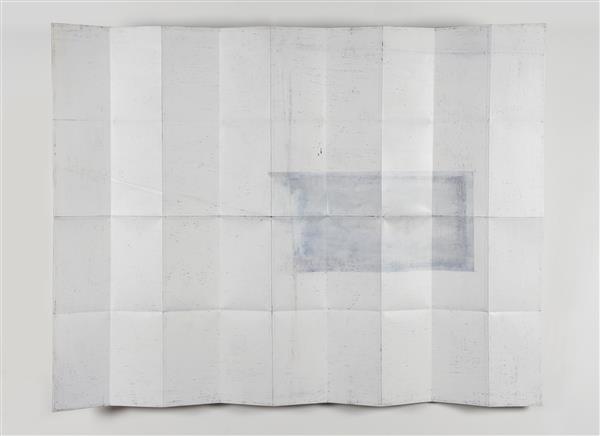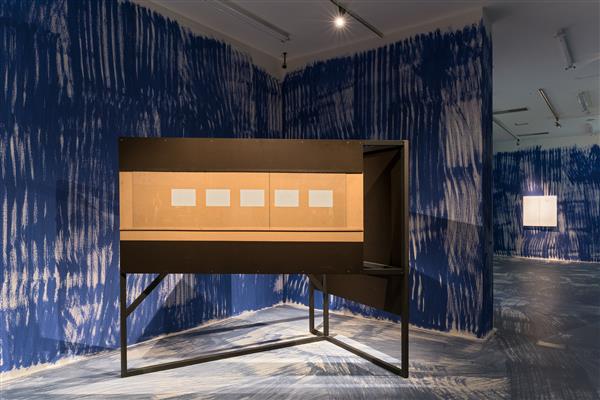Guide Stick
Antanas Gerlikas
object, wood
l 60 cm, ø 30 cm
2011
Acquisition 2012
Inv. No. 0235
Antanas Gerlikas is interested in museal fragments, investigating the relationship between art and the everyday. In his – often conceptually invested – work, he connects institutional critique with an autonomous application of art observation. In the process, he happily leaves much undefined.
For example, his contribution for the Lithuanian pavilion at the Venice Biennial 2013 is difficult to grasp. The name of the artist, who studied glass-work and sculpture at the academy in Vilnius, is not to be found on the official list of artists participating in the Palasport Arsenale exhibition. However it appears on the website of the pavilion, (http://oo-oo.co) where Antanasʼ Dream – photographs of golden disks, each roughly cut in half – is shown. In curator Raimundas Malašauskasʼ “timeline” for the exhibition, it is alleged that Antanas Gerlikas dreamed in 2011 of future pavilions in Venice – more information is not to be had, and the business remains mysterious.
The Guide Stick in the evn collection is also cryptic. The twig-like form is reminiscent of a divining rod and is difficult to bring into harmony with its title. The object seems too magical to be a purely functional object. Pointers – and this is the context in which Antanas Gerlikas sees his Guide Stick – should lead the publicʼs gaze and are directly associated with verbal explanations by teachers, trip leaders and museum guides. The Guide Stick, however, is not suited for this purpose. It is very fragile, and in probably what is the biggest challenge, it points in more than one direction. It also appears that some of the smaller branches, because of their intense convolution, point back towards the user. Clarity is therefore eliminated; reference to a specific object is not possible.
The 2012 exhibition The Museum Problem in the Roman gallery Frutta is helpful in Guide Stickʼs reception. The group exhibition dealt with the well-known “problem of the museum guard” from the realm of combinatory algebraic geometry. This tries to calculate how much supervisory staff is needed to protect a certain exhibition space, and to find the appropriate placement for both the guards and the artwork. In the Roman exhibition, this approach was critically examined, both the organization of the artworks as well as how it related to the layout of routes for visitors.
The pseudo-museal Guide Stick is a completely ideal object to set forth a challenge, as its physical ambiguity clearly embodies the dissolution of any institutional parameters. Its usage alludes to a very relaxed association with determinism – the freedom of observation affords many possibilities.
Heike Maier-Rieper, 2015 (translation: Virginia Dellenbaugh)
Continue readingExhibitions
Small Medium Large. Sculptures and Objects from the evn collection, evn sammlung, Maria Enzersdorf, 2022
Publications
evn collection. 95–2015 Jubilee, Vienna 2015, p. 148–151
The Museum Problem [published on the occasion of the exhibition “The Museum Problem”, Frutta Gallery, Rome, January 17th – February 25th 2012], Rome 2012, p. 3


